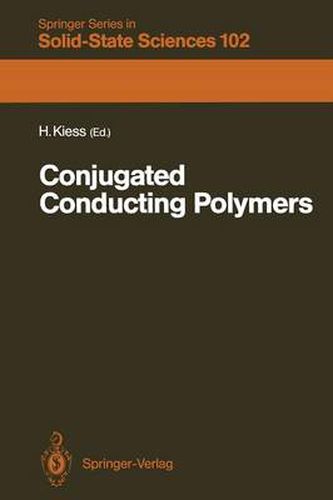Readings Newsletter
Become a Readings Member to make your shopping experience even easier.
Sign in or sign up for free!
You’re not far away from qualifying for FREE standard shipping within Australia
You’ve qualified for FREE standard shipping within Australia
The cart is loading…






This title is printed to order. This book may have been self-published. If so, we cannot guarantee the quality of the content. In the main most books will have gone through the editing process however some may not. We therefore suggest that you be aware of this before ordering this book. If in doubt check either the author or publisher’s details as we are unable to accept any returns unless they are faulty. Please contact us if you have any questions.
This book reviews the current understanding of electronic, optical and magnetic properties of conjugated polymers in both the semiconducting and metallic states. It introduces in particular novel phenomena and concepts in these quasi one-dimensional materials that differ from the well-established concepts valid for crystalline semiconductors. After a brief introductory chapter, the second chapter presents basic theore tical concepts and treats in detail the various models for n-conjugated polymers and the computational methods required to derive observable quantities. Specific spatially localized structures, often referred to as solitons, polarons and bipolarons, result naturally from the interaction between n-electrons and lattice displacements. For a semi-quantitative understanding of the various measure ments, electron-electron interactions have to be incorporated in the models; this in turn makes the calculations rather complicated. The third chapter is devoted to the electrical properties of these materials. The high metallic conductivity achieved by doping gave rise to the expression conducting polymers, which is often used for such materials even when they are in their semiconducting or insulating state. Although conductivity is one of the most important features, the reader will learn how difficult it is to draw definite conclusions about the nature of the charge carriers and the microscopic transport mechanism solely from electrical measurements. Optical properties are discussed in the fourth chapter.
$9.00 standard shipping within Australia
FREE standard shipping within Australia for orders over $100.00
Express & International shipping calculated at checkout
This title is printed to order. This book may have been self-published. If so, we cannot guarantee the quality of the content. In the main most books will have gone through the editing process however some may not. We therefore suggest that you be aware of this before ordering this book. If in doubt check either the author or publisher’s details as we are unable to accept any returns unless they are faulty. Please contact us if you have any questions.
This book reviews the current understanding of electronic, optical and magnetic properties of conjugated polymers in both the semiconducting and metallic states. It introduces in particular novel phenomena and concepts in these quasi one-dimensional materials that differ from the well-established concepts valid for crystalline semiconductors. After a brief introductory chapter, the second chapter presents basic theore tical concepts and treats in detail the various models for n-conjugated polymers and the computational methods required to derive observable quantities. Specific spatially localized structures, often referred to as solitons, polarons and bipolarons, result naturally from the interaction between n-electrons and lattice displacements. For a semi-quantitative understanding of the various measure ments, electron-electron interactions have to be incorporated in the models; this in turn makes the calculations rather complicated. The third chapter is devoted to the electrical properties of these materials. The high metallic conductivity achieved by doping gave rise to the expression conducting polymers, which is often used for such materials even when they are in their semiconducting or insulating state. Although conductivity is one of the most important features, the reader will learn how difficult it is to draw definite conclusions about the nature of the charge carriers and the microscopic transport mechanism solely from electrical measurements. Optical properties are discussed in the fourth chapter.